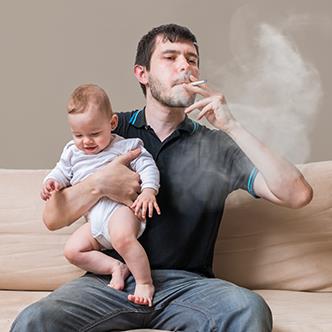
Despite significant reductions in smoking rates over the past 50 years, childhood exposure to secondhand smoke remains a major public health concern, as highlighted in a recent statement from the American Heart Association.
Published in the American Heart Association journal Circulation, this statement summarized the latest on trends and health effects of exposure to secondhand smoke during childhood. The take-home message is this: Never expose children to secondhand smoke.
Since the American Heart Association’s last statement on secondhand smoke exposure in children published two decades ago, experts explain that we’ve learned a lot more about the negative effects of secondhand smoke. The new findings are concerning, given the high rates of secondhand smoke exposure in U.S. children.
First, side-stream smoke, which is the smoke that comes from the burning end of a cigarette, contains a higher concentration of some toxins than the smoke inhaled by the smoker directly. According to experts, this smoke is as dangerous or even more dangerous than direct smoking, and children are especially susceptible to its negative effects.
Both human and animal studies show that childhood exposure to secondhand smoke has negative effects on the heart’s arteries and blood vessels, potentially causing premature heart disease and other heart conditions. These negative effects can even start in utero, before a baby is even born. Research shows that the consequences of secondhand smoke exposure carry well into adulthood.
The good news is that tobacco smoke exposure has decreased significantly in children over the past few decades. Between 2000 and 2009, secondhand smoke exposure in middle school and high school adolescents decreased from 59% to 34%. However, it’s still estimated that 1 in 3 children in the United States are still exposed to secondhand smoke. Exposure to secondhand smoke is significantly higher among minorities and low-income populations.
As a result, experts highlight the need for improved education and more robust policies that demand zero tolerance for childhood exposure to secondhand smoke. Approximately 24 million U.S. children are currently exposed to secondhand smoke, and unfortunately, there is no doubt that exposure will have long-term effects on their health. With increased education and policy change, experts hope to eliminate childhood exposure to secondhand smoke and help protect this innocent and vulnerable population.